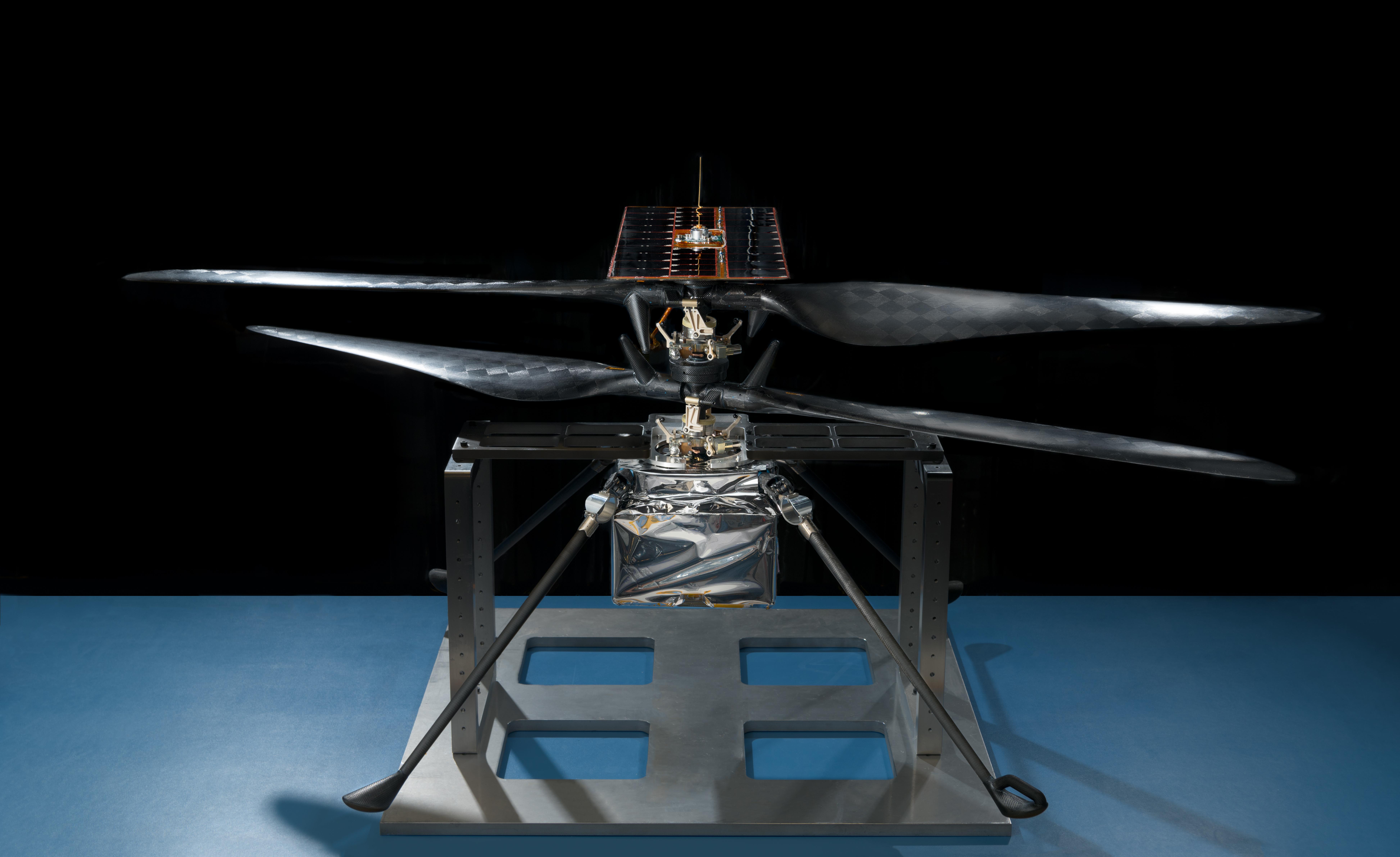NASA's Mars Helicopter Whirls Through Tests on Way to 2020 Launch
The little chopper is designed to show that aerial exploration is possible on Mars.
NASA's first Mars helicopter is getting close to final approval for launch after passing several key tests.
The Mars Helicopter flight demonstration project will launch next summer with the Mars 2020 rover and touch down on the Red Planet in February 2021.
While the rover searches for signs of past life on the Red Planet and caches samples for future return to Earth, the helicopter will soar above Mars in a series of demonstration flights. Future missions could see such helicopters scouting ahead for where rovers could go next.
Related: NASA's Mars Rover 2020 Mission in Pictures (Gallery)

"Nobody's built a Mars helicopter before, so we are continuously entering new territory," MiMi Aung, project manager for the Mars Helicopter at NASA's Jet Propulsion Laboratory (JPL) in Pasadena, California, said in a statement.
Back in January, the flight model flew in a simulated Martian environment at JPL's Space Simulator, a vacuum chamber that has a diameter of 25 feet (roughly 8 meters). Then it was moved to a Lockheed Martin Space facility in Denver.
At its new location, the helicopter was tested for compatibility with the Mars Helicopter Delivery System. This system will carry the helicopter under the Mars 2020 rover's belly during launch and cruise to Mars. The helicopter will separate from the rover after landing.
Get the Space.com Newsletter
Breaking space news, the latest updates on rocket launches, skywatching events and more!
In Denver, the connections and mechanisms between the delivery system and helicopter were tested to make sure they fit together. The mated system experienced vibrations similar to what happens during launch and cruise. Also, the helicopter and delivery system were put into a thermal vacuum chamber to see how they performed in cold temperatures (minus 200 degrees Fahrenheit, or minus 129 degrees Celsius), similar to the conditions they'll experience in deep space and on the Martian surface.
With these tests complete, the helicopter went back to JPL on May 11 for several more procedures, including spinning up the rotor blades and installing a new solar panel. More testing is ahead, but the end is in sight — at least for work here on Earth
"We expect to complete our final tests and refinements and deliver the helicopter to the High Bay 1 clean room for integration with the rover sometime this summer," Aung said, "but we will never really be done with testing the helicopter until we fly at Mars."
Since the helicopter is a demonstrator, it has no science instruments on board; rather, its main purpose is to show that powered flight in the Martian atmosphere is achievable. The Red Planet's air is just 1% as dense as that of Earth.
Even if the minicoptercan take flight, there are other obstacles to overcome, such as the time lag involved in controlling it from Earth. (It takes between 4 minutes and 24 minutes for signals to travel between Earth and Mars, depending on the positions of the two planets in space.) Imaging will also be tested to see the helicopter's capabilities for transmitting high-resolution color photos.
"Future Mars missions could enlist second-generation helicopters to add an aerial dimension to their explorations,' NASA officials added in the statement. "They could investigate previously unvisited or difficult-to-reach destinations such as cliffs, caves and deep craters, act as scouts for human crews or carry small payloads from one location to another. But before any of that happens, a test vehicle has to prove it is possible."
- Mars 2020: The Red Planet's Next Rover
- How NASA's Mars 2020 Rover Will Work (Infographic)
- NASA's Mars 2020 Rover Is Unique. And So Is Its Paint Job
Follow Elizabeth Howell on Twitter @howellspace. Follow us on Twitter @Spacedotcom and on Facebook.
Join our Space Forums to keep talking space on the latest missions, night sky and more! And if you have a news tip, correction or comment, let us know at: community@space.com.

Elizabeth Howell (she/her), Ph.D., was a staff writer in the spaceflight channel between 2022 and 2024 specializing in Canadian space news. She was contributing writer for Space.com for 10 years from 2012 to 2024. Elizabeth's reporting includes multiple exclusives with the White House, leading world coverage about a lost-and-found space tomato on the International Space Station, witnessing five human spaceflight launches on two continents, flying parabolic, working inside a spacesuit, and participating in a simulated Mars mission. Her latest book, "Why Am I Taller?" (ECW Press, 2022) is co-written with astronaut Dave Williams.
